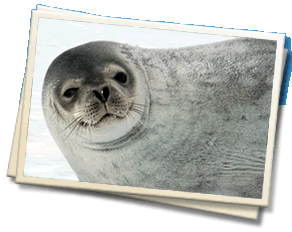
 The University of Delaware is pleased to announce "The William S. Carlson
International Polar Year Events," a series of public lectures, receptions,
research seminars, art exhibits, and film showings at UD, to increase public
awareness of the importance of the world’s polar regions.
The University of Delaware is pleased to announce "The William S. Carlson
International Polar Year Events," a series of public lectures, receptions,
research seminars, art exhibits, and film showings at UD, to increase public
awareness of the importance of the world’s polar regions.
We hope you'll join us for these exciting events at the University of Delaware, a leader in polar research!

![]() Digital Library for
Digital Library for
Earth System Education. Offers hundreds of resources for kindergarten
to graduate students and the public.
![]() International
Polar Year Web Site — Educators. Includes
resources and activities you can use in your classroom, with short
to long lead times.
International
Polar Year Web Site — Educators. Includes
resources and activities you can use in your classroom, with short
to long lead times.
![]() Teachers'
Domain. Presented by WGBH Educational Foundation, provides
K-12 teachers new ways to inspire students, broaden content knowledge,
and integrate technology in the classrooms. See "Compare
the Poles."
Teachers'
Domain. Presented by WGBH Educational Foundation, provides
K-12 teachers new ways to inspire students, broaden content knowledge,
and integrate technology in the classrooms. See "Compare
the Poles."
![]() U.S.
International Polar Year Web Site. See "Explore
and Learn" for
teachers and students.
U.S.
International Polar Year Web Site. See "Explore
and Learn" for
teachers and students.
Craig Cary, professor of marine and earth studies, has been awarded a $121,859 NSF IPY grant to work in the Antarctic on ecosystems dominated by microorganisms and how they adapt to conditions of continuous cold and dark over evolutionarily and geologically relevant time scales. The work will be conducted at Lake Vostok, buried for at least 15 million years beneath approximately 4 kilometers of ice that has prevented any contact with the external environment for more than a million years.
Barbara J. Campbell and Thomas E. Hanson, both assistant professors of marine and earth studies, have received NSF funding to understand how changes in temperature and nitrogen deposition affect tundra ecosystems. They have done extensive work on microbial communities at Toolik Lake in Alaska.
Tracy Deliberty, associate professor of geography, with associate research professor Cathleen Geiger and several graduate students in geography, is engaged in work on Antarctic sea ice, with a strong thematic emphasis on remote sensing and geographic information science.
Thomas K. Gaisser, Martin A. Pomerantz Chair of Physics and Astronomy at UD's Bartol Research Institute, has worked extensively in cooperation with an international team of scientists led by the University of Wisconsin Madison on the creation of a massive neutrino telescope at the South Pole. The $272 million telescope is called IceCube, with UD the lead institution for an array of detectors on the surface called IceTop. Gaisser said the IceTop surface array will detect and study events produced by high-energy cosmic-ray particles interacting in the atmosphere above IceCube. Such downward events produce the main background in the deep neutrino telescope so tagging them with the surface array will improve the signal to background ratio of the instrument. Events detected in coincidence by both the surface and the deep detectors also carry information about the origin of the cosmic rays of very high energy. This information will be complementary to that obtained from the upward events in the neutrino telescope.
Cathleen Geiger, associate research professor, is part of an Arctic sea ice project to be held in conjunction with the start of the International Polar Year. The project is dubbed SEDNA, for Sea-ice Experiment: Dynamic Nature of the Arctic, with Sedna also being the name of an Inuit goddess of the Arctic. It is funded by a $1.4 million National Science Foundation grant and includes UD alumna Jacqueline Richter-Menge, '79, '81M, in a team that will be living in an ice camp.
Brian Hanson, professor of geography and interim chairperson of the Department of Geography, is a well-known glaciologist with extensive field experience in northern Scandinavia and elsewhere.
Chandra Kambhamettu, associate professor of computer and information sciences, is conducting studies of Arctic sea ice movement at the Video Image Modeling and Synthesis Laboratory at UD. The project is associated with the SEDNA project, noted above, and will receive $525,000 in National Science Foundation funding.
David L. Kirchman, professor of marine and earth studies, has been awarded a $406,762 National Science Foundation IPY grant to examine whether chemolithotrophic microbes are common in Arctic waters and the relationship between those microbes and high levels of ammonium and methane found in those coastal waters. The interdisciplinary work will involve environmental genomics, microbial ecology and biogeochemistry, and will be conducted in Barrow, Alaska.
Daniel J. Leathers, professor of geography, is a climatologist specializing in snow science.
David R. Legates, associate professor of geography, has been heavily involved in the creation of climate data sets for the Arctic, and works closely with researchers at the University of Alaska Fairbanks.
Delphis F. Levia Jr., assistant professor of geography, is a field-oriented physical geographer who frequently works on problems involving snow science.
Adam G. Marsh, associate professor of marine and earth studies, received a 2003 NFS Faculty Early Career Development Award to support his research on marine life in Antarctica. He is interested in how the sea urchin and sea star can grow and develop in the frigid waters.
Tom Meierding, professor emeritus of geography, is a climatic geomorphologist who worked extensively on problems involving the distribution of glaciers, the climatic signals that can be interpreted from patterns of glaciation, and on relict cold climate landforms in the Mid-Atlantic region.
Andreas K. Muenchow, associate professor of marine and earth studies, is a physical oceanographer who has conducted research in the Arctic off Greenland, Ellesmere Island, Alaska, and Siberia. He has interest in the effects of freshwater flow from the Arctic on global climate.
Michael A. O'Neal, assistant professor of geography, is a glacial geomorphologist who has done extensive work in Greenland and other cold regions.
Lidia Rejto, professor of statistics and director of the Statistical Laboratory in the Department of Food and Resource Economics, said StatLab is working with Craig Cary and Thomas E. Hanson of the College of Marine and Earth Studies on cold regions research. StatLab collaborates with UD scientists to enhance research with appropriate statistical modeling and analysis.
Cort J. Willmott, professor of geography, is widely acclaimed for his work in creating climatological data for the Arctic region. He also works collaboratively with researchers at the University of New Hampshire on projects focusing on pan-Arctic hydrology.





